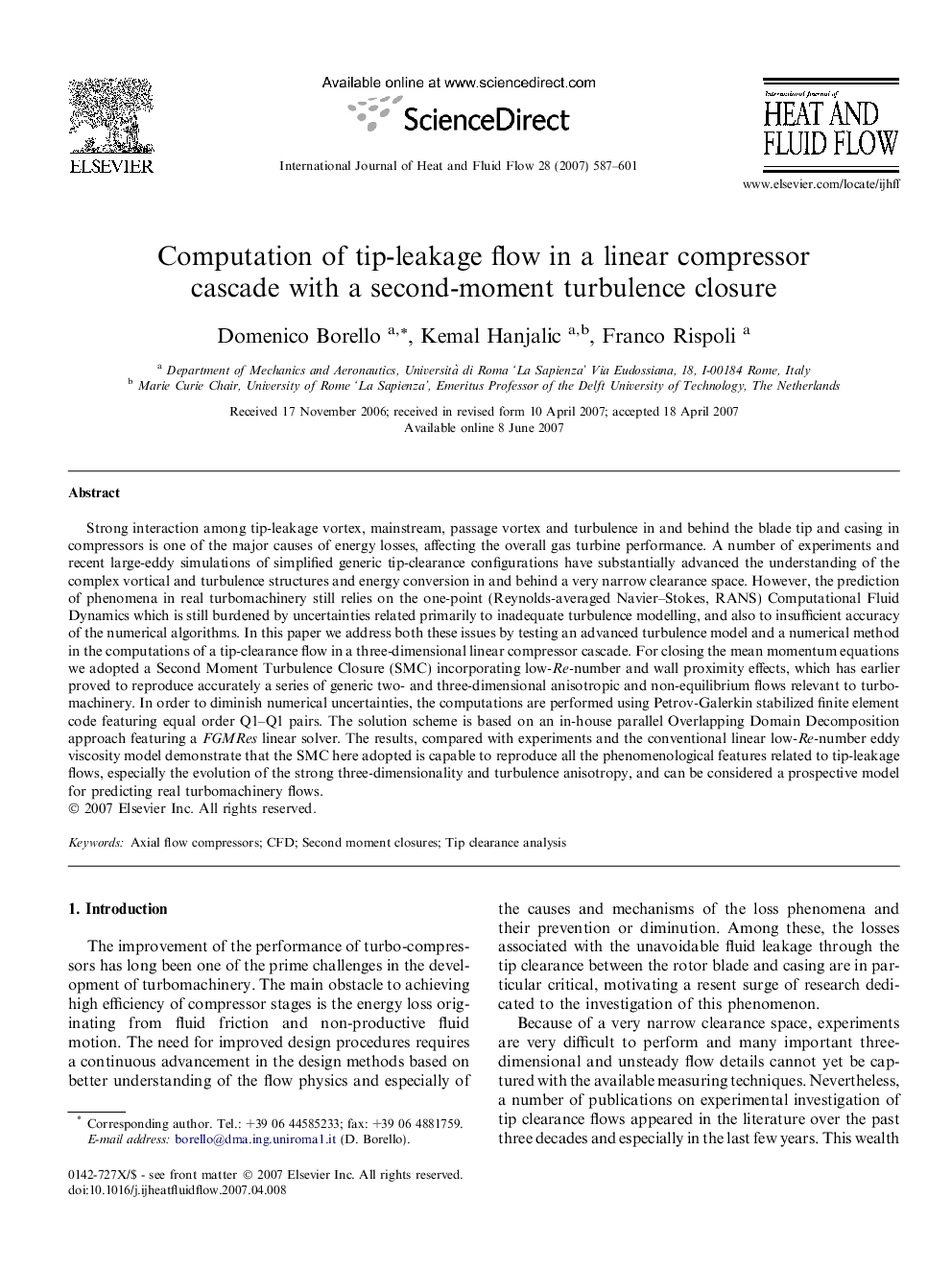| کد مقاله | کد نشریه | سال انتشار | مقاله انگلیسی | نسخه تمام متن |
|---|---|---|---|---|
| 656180 | 1457675 | 2007 | 15 صفحه PDF | دانلود رایگان |

Strong interaction among tip-leakage vortex, mainstream, passage vortex and turbulence in and behind the blade tip and casing in compressors is one of the major causes of energy losses, affecting the overall gas turbine performance. A number of experiments and recent large-eddy simulations of simplified generic tip-clearance configurations have substantially advanced the understanding of the complex vortical and turbulence structures and energy conversion in and behind a very narrow clearance space. However, the prediction of phenomena in real turbomachinery still relies on the one-point (Reynolds-averaged Navier–Stokes, RANS) Computational Fluid Dynamics which is still burdened by uncertainties related primarily to inadequate turbulence modelling, and also to insufficient accuracy of the numerical algorithms. In this paper we address both these issues by testing an advanced turbulence model and a numerical method in the computations of a tip-clearance flow in a three-dimensional linear compressor cascade. For closing the mean momentum equations we adopted a Second Moment Turbulence Closure (SMC) incorporating low-Re-number and wall proximity effects, which has earlier proved to reproduce accurately a series of generic two- and three-dimensional anisotropic and non-equilibrium flows relevant to turbomachinery. In order to diminish numerical uncertainties, the computations are performed using Petrov-Galerkin stabilized finite element code featuring equal order Q1–Q1 pairs. The solution scheme is based on an in-house parallel Overlapping Domain Decomposition approach featuring a FGMRes linear solver. The results, compared with experiments and the conventional linear low-Re-number eddy viscosity model demonstrate that the SMC here adopted is capable to reproduce all the phenomenological features related to tip-leakage flows, especially the evolution of the strong three-dimensionality and turbulence anisotropy, and can be considered a prospective model for predicting real turbomachinery flows.
Journal: International Journal of Heat and Fluid Flow - Volume 28, Issue 4, August 2007, Pages 587–601